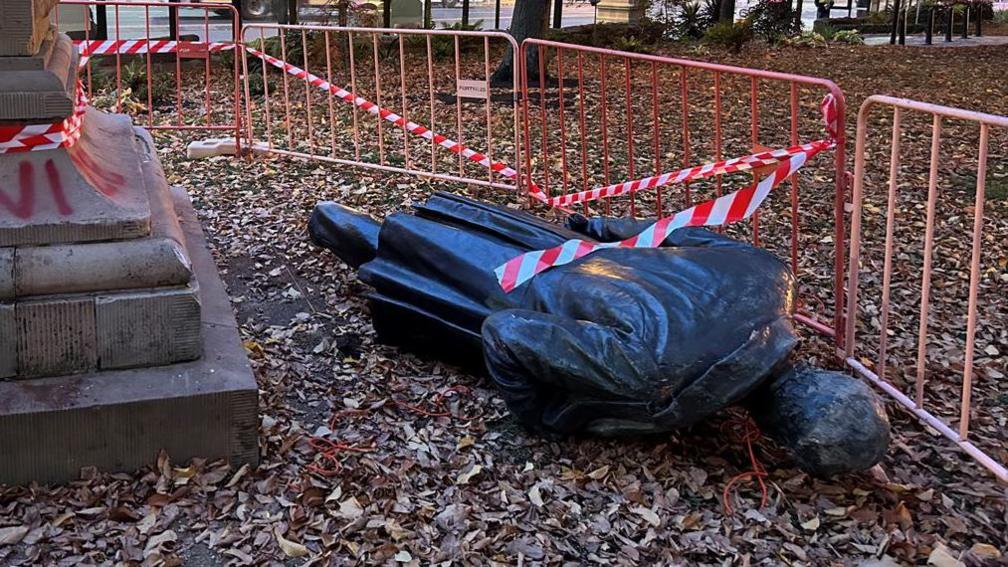Australian colonial statue toppled before historic ruling

The William Crowther statue in Hobart was toppled by vandals
- Published
A colonial-era statue honouring a former Australian premier who mutilated the body of an Aboriginal man has been toppled by vandals ahead of its planned removal.
In a ruling on Wednesday, a tribunal upheld a landmark decision to have the monument to William Crowther in Tasmania taken down permanently - putting to rest years of debate.
But in the hours before the ruling protesters cut down the structure by sawing through its legs.
The plinth was then left graffitied with the words "what goes around" and "decolonize".
Crowther is accused of cutting off and stealing the skull of William Lanne, an Aboriginal Tasmanian leader known as "King Billy", whose body was dismembered and used for scientific research after his death in 1869.
Crowther then allegedly replaced the skull with one from another corpse in an attempt to conceal his actions. It is believed Lanne's skull was then taken to the Royal College of Science in London.
First Nations advocates have long campaigned to have the statue - which has occupied Hobart's Franklin Square since 1889 - removed, arguing that it is a symbol of violence.
And in an Australian first, the city's council voted to do just that in 2022 - sparking a lengthy heritage appeal, which has now been settled.
Hobart's Mayor Anna Reynolds said she was "incredibly disappointedÔÇØ to learn that the statue had been targeted ÔÇ£before the decision was announcedÔÇØ.
ÔÇ£This is a very important decision for HobartÔÇÖs commitment to truth telling... about our colonial history," she told a press conference.
"We strongly condemn vandalism - it doesnÔÇÖt build bridges or goodwill," she added.
An investigation into the damage inflicted on the statue is now under way, local authorities say.
In a statement the council said that it planned to commission a new work to replace the Crowther monument, which would "tell a broader and more truthful story" about the city's past.
Until then, it said a temporary sign would be installed to offer "deeper insights" into "the actions and impacts of William Crowther and his treatment of Aboriginal people's remains".
Related topics
- Published10 April 2023
- Published25 January